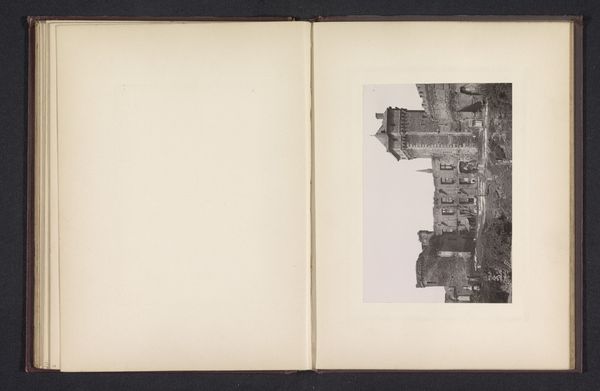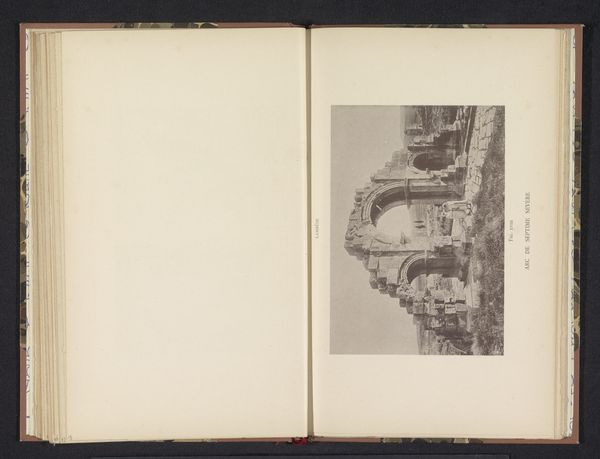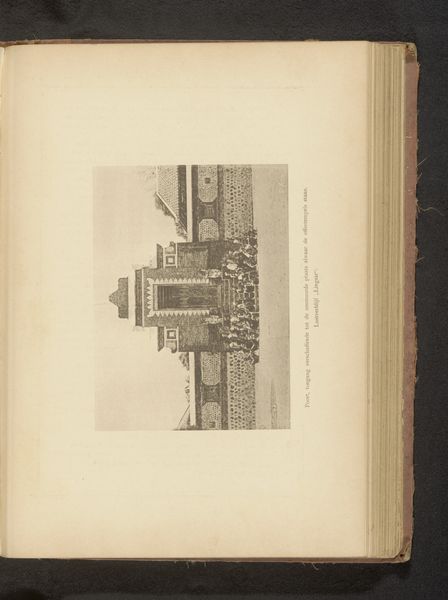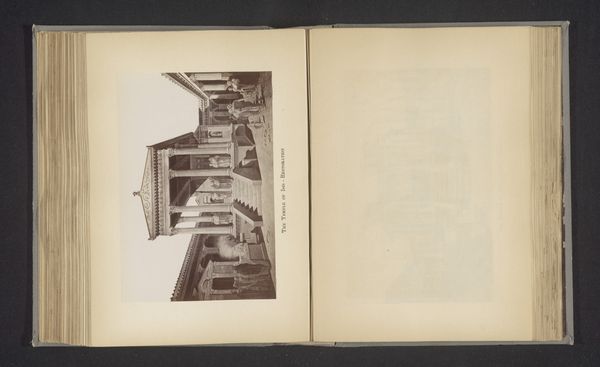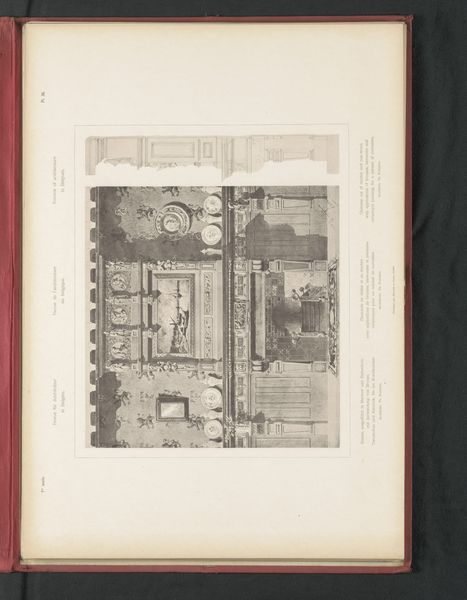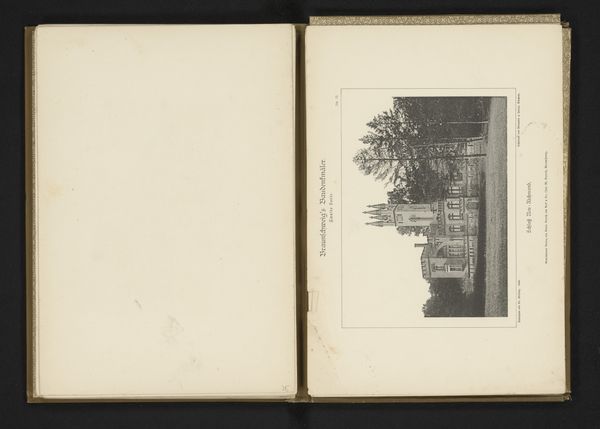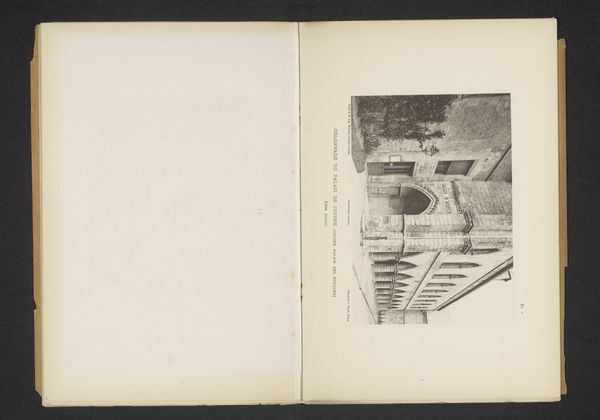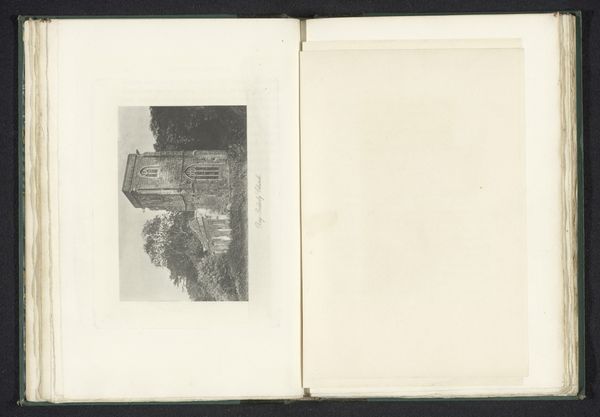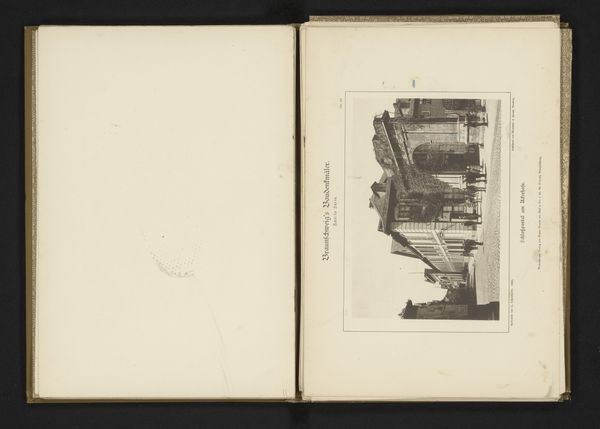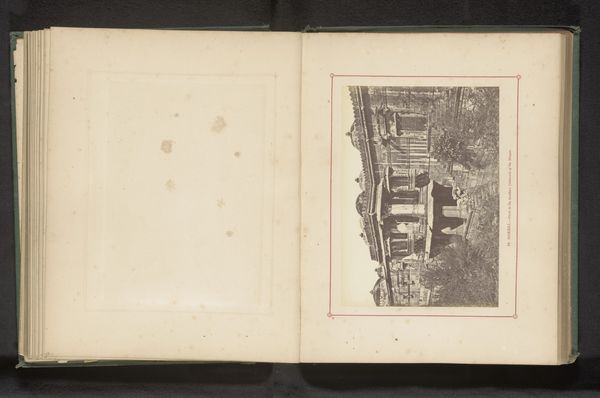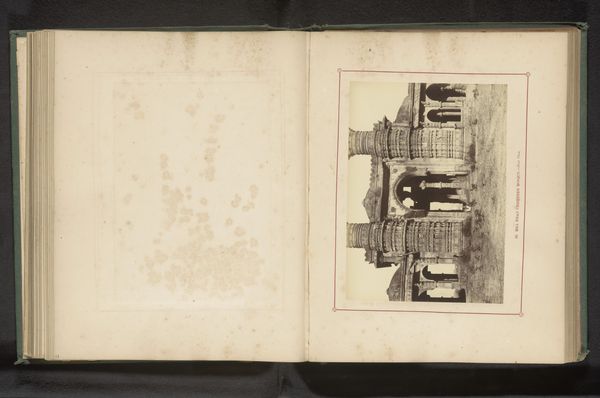
Reproductie van een ontwerp van de Baden van Diocletianus door Edmond Paulin before 1886
0:00
0:00
drawing, print, engraving, architecture
#
drawing
#
neoclassicism
# print
#
academic-art
#
engraving
#
architecture
Dimensions: height 134 mm, width 276 mm
Copyright: Rijks Museum: Open Domain
Editor: So, this engraving is called "Reproductie van een ontwerp van de Baden van Diocletianus door Edmond Paulin," dating from before 1886. It appears to be an architectural rendering. The fine lines create such incredible detail, making me wonder about the process of producing something like this. What jumps out at you? Curator: What strikes me immediately is how this image performs labor, both literally and figuratively. The baths of Diocletian were monumental displays of Roman power, constructed through the intensive labor of enslaved peoples and colonial resources. Then, we see the work that Edmond Paulin puts in to translate those massive stone works into a print, mediated by materials like paper, ink, and an engraver’s tools, raising questions about authorship. Editor: That's a compelling point. It wasn't just Paulin; there was a whole system involved in producing this image. It makes me consider what making such an accurate reproduction served. Curator: Exactly. Think about the context of 19th-century academic art. This isn’t just about recording history; it’s about using these architectural giants to teach values of order, control, and empire to students in design. What values does repeating that past communicate? And who benefits from those communicated ideals? Editor: It’s about reproducing not just the image but also the power structures it represents. So, seeing it as a print changes its role. Curator: Precisely. The value isn't only in its aesthetic qualities, but in understanding how this image and its materials functioned within social and educational frameworks. What the consumer then sees as historical information might reflect more about how labor and authority are perceived in the present than that long-lost past. Editor: I never thought about a neoclassical drawing embodying so much manual and intellectual labor. Thanks, this was eye opening. Curator: You’re welcome. Seeing the print as material allows a much deeper understanding of its time and its purpose.
Comments
No comments
Be the first to comment and join the conversation on the ultimate creative platform.
